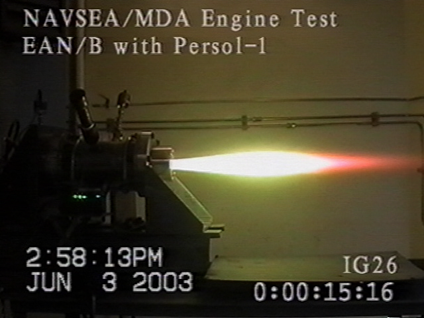High Pressure Combustion Lab
Dr. Richard Yetter, Director
104 Research Building East
University Park, PA 16802
Phone: (814) 863-6375
Email: ray8@psu.edu
Dr. Eric Boyer, Assistant Director
High Pressure Combustion Lab
University Park, PA 16802
Phone: (814) 863-2264
Email: jeb19@psu.edu
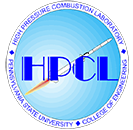
Facilities - Rocket Motors
Solid Rocket Motors
Multiple solid rocket motors (SRMs) of various sizes have been utilized extensively at the HPCL. In some cases this includes portions of scaled-down analogs of existing space launch, tactical, and strategic SRMs.
Ablative Material SRM
A highly instrumented SRM capable of examining the instantaneous recession and char layer development of the surface both nozzle materials and internal insulation. This SRM features a two-dimensional planar test section which has X-ray transparent windows, such that the HPCL's X-ray RTR system can be utilized. The SRM currently can be configured in one of two ways, either with two flat internal insulation samples located in the top and bottom of the test section or with an adapter to position a nozzle into the X-ray transparent region. In addition to X-ray RTR, this SRM has been utilized with advanced heat transfer instrumentation, including multiple custom sensors to simultaneously measure total heat flux as well as radiative heat flux, upstream of the eroding material of interest.
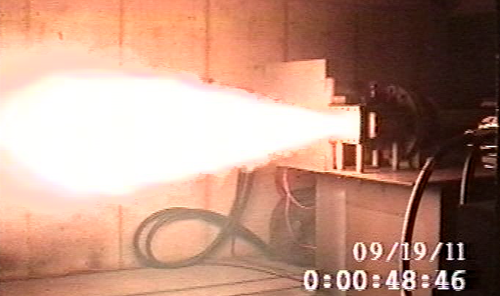
Fin-Slot SRM
In order to investigate the flame-spreading process in the fin-slot segment of the propellant grain used at the head end of the Space Shuttle Reusable Solid Rocket Motor (RSRM), an existing test rig at the HPCL was modified to simulate a 1/10th-scale internal geometry representative of the RSRM section of interest. The flame-spreading event and the associated flow-field structure and energy transfer rates at various locations are measured and recorded by several non-intrusive diagnostic techniques, including high-speed video, chalk/kerosene powder painted on the windows, small threads taped to the window, a photodetector array, and an array of heat-flux gauges to monitor the heat-transfer rates and instantaneous acoustic emission profiles at different locations.
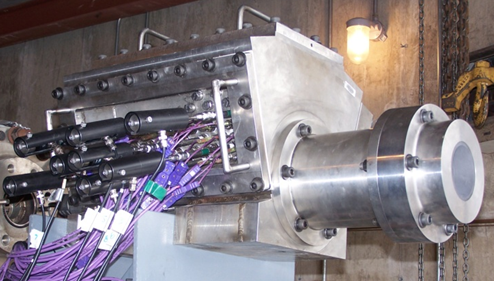
High-Pressure Instrumented SRM
An SRM capable of housing solid-propellant grains over 76 cm in length and 12 cm in diameter and operating at testing chamber pressures up to 8,000 psi (55MPa) was designed and tested as part of a ONR-MURI. As part of the overall program this SRM examined the use of a nozzle boundary-layer cooling system (NBLCS) at high-pressure as a means of mitigating nozzle throat erosion. This system is mounted at one of two test stands at the HPCL's remote outdoor test facility.
Hybrid Rocket Motors
There are three hybrid rocket motors at the HPCL, including two cylindrical motors with center-perforated grains and one 2-D slab motor. The two cylindrical motors offer a scaling of approximately 3:1 in initial port diameter. The smaller long-grain center-perforated (LGCP) motor is a cartridge-loaded steel-cased motor capable of multiple injection profiles, thrust and pressure measurements, and has an interchangeable nozzle. The second cylindrical motor is the X-ray translucent casing (XTC) motor, which utilizes a thick-walled paper phenolic tube as the motor casing. This non-metallic casing allows the passage of X-rays through the motor for imaging the instantaneous surface of the solid fuel. The 2-D slab motor also has optical or X-ray translucent windows.
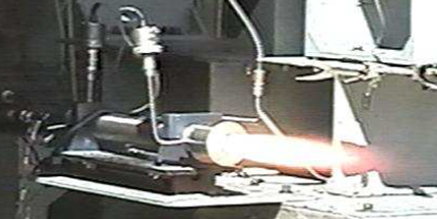
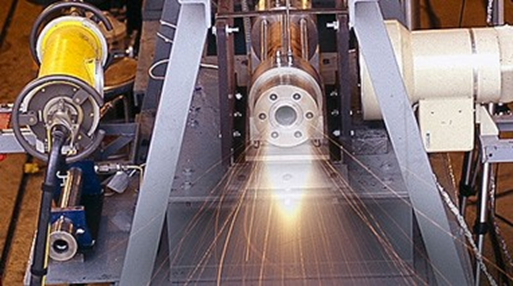
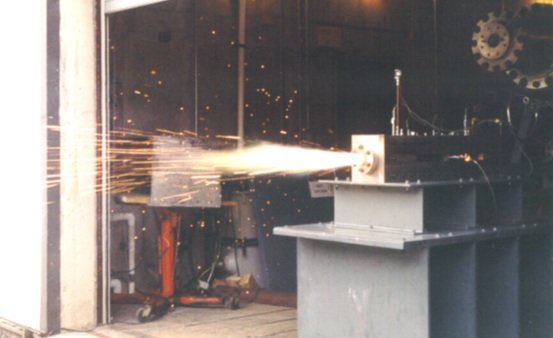
Gas Rocket Motors
The gaseous rocket motor simulator (RMS) utilizes a bi-directional counter-flow vortex combustion chamber. The ability to control product species concentrations through variation in gaseous reactant flow rates allows generation of combustion products with flame temperatures and concentrations of selected oxidizing species similar to those of non-metallized solid propellant grains, and the effect of individual chemical species on the nozzle erosion process can be evaluated in detail. The RMS has an X-ray translucent nozzle assembly which allows the instantaneous rocket nozzle erosion rates to be evaluated by X-ray RTR. The RMS combustor can also be used to provide a high-pressure, hot convective-flow environment with controllable species and temperature to evaluate material erosion.
Liquid/Gelled Bi-propellant Rocket Engine
The HPCL has a bi-propellant rocket engine for studying the combustion of liquid or gelled propellants which could contain nano-sized energetic particles. To date combustion tests of gelled RP-1 propellant with nano-sized aluminum (ALEX) particles were performed in this bi-propellant rocket engine. The rocket engine consists of a cylindrical chamber with a converging diverging nozzle, where the propellants are introduced into the combustion chamber through a coaxial injector. The rocket motor can be operated with either a liquid or gaseous oxidizer. Where in the latter case gaseous oxygen is utilized to atomize the liquid or gelled fuel. The operating conditions for the bi-propellant rocket engine are as follows: chamber pressures ranging from 100 to 1000 psig, gel propellant mass flow rates ranging from 1 to 10 g/s, gaseous oxygen mass flow rates ranging from 5 to 20 g/s, and O/F ratios ranging from 1 to 4. Gelled RP-1 has been tested up with up to 55 wt% nano-sized aluminum.
